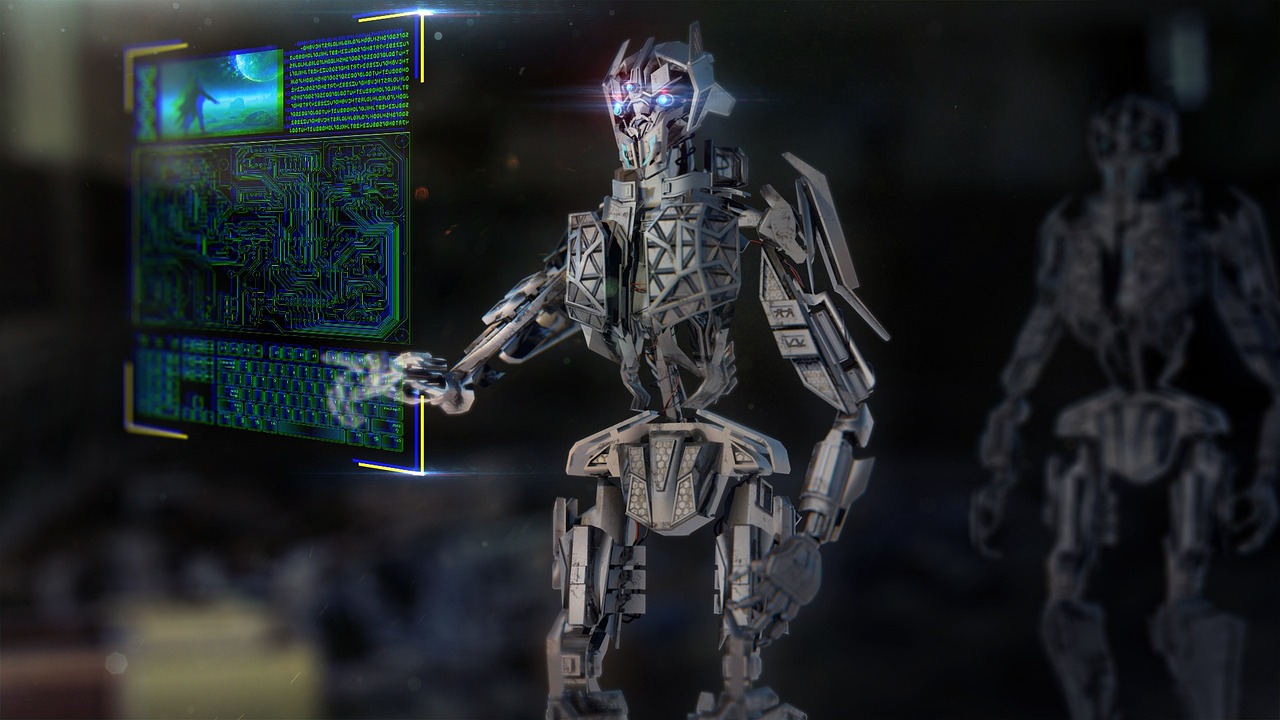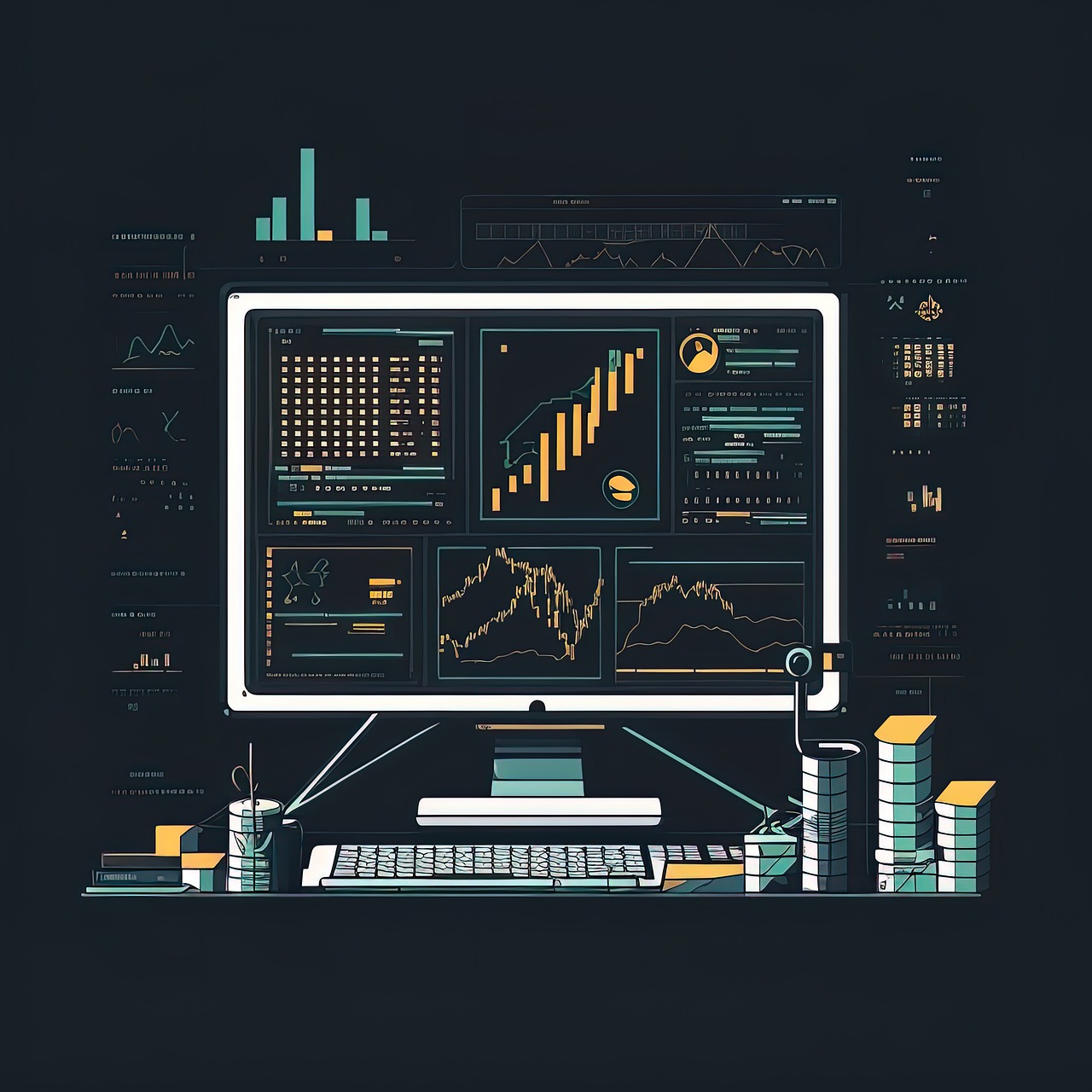In the ever-evolving landscape of technology, AI has emerged as a transformative force that has captured my imagination and sparked my curiosity.
As I delve into the world of artificial intelligence, I find myself on a journey of discovery, constantly amazed by the rapid advancements and the profound impact AI is having on our lives.
In this exploration, I’ve come across the top 10 AI trends that are shaping our present and defining our future. These trends are not just headlines; they are the threads weaving the fabric of a new era, where machines are intelligent and incredibly insightful.
Join me on this exhilarating ride as we uncover the most intriguing AI trends that promise to revolutionize industries, redefine human-machine interaction, and push the boundaries of what’s possible.
From the intricacies of AI ethics to the incredible possibilities of quantum AI, we’ll embark on a journey through the fascinating world of artificial intelligence.
A Summary of the Top AI Trends:
| No. | Trend | Key Changes |
| 1. | Rise of Ethical AI | More regulation of AI |
| 2. | Standardization of ML processes | More streamlined and standardized ML processes in organizations |
| 3. | Generative AI in Marketing and Media | AI creates content for the marketing needs of businesses |
| 4. | Increasing Importance of Model Management Platforms | Popularization of model management platforms among organizations |
| 5. | Greater Penetration of Adaptive AI | More personalized store experiences |
| 6. | Increasing Role of Edge AI | Smarter manufacturing units, retail stores, and supply chains |
| 7. | More Accurate Health Diagnostics | Better and more automated telemedicine experiences |
| 8. | Better Demand Forecasting and Workflow Automation in Retail | Fewer stock shortages, improved service quality, reduced costs |
| 9. | Improved Fraud Detection and Personalization in Fintech | Improved customer identification and risk management, automated and swift fraud detection |
| 10. | Creative AI In The World Of Art | Changing the ways of creating art and illustrations |
1. The Rise Of Ethical AI

It is important to recognize that the field of AI, and the companies creating AI-powered tools for various tasks have not been subject to extensive regulation, unlike many other industries governed by laws and regulations. In the history of AI, companies have mostly relied on self-regulation within the industry.
The AI industry used to operate with few restrictions, but that is changing rapidly. New laws, such as the European Union AI Act, American Data Privacy and Protection Act, and Securing Open Source Software Act, are transforming the landscape.
A Gartner report predicts that by 2025, businesses will need to prioritize ethics, transparency, and privacy in their use of AI due to these regulations. This shift marks a significant change for the industry.
It’s important for AI systems to be ethical and trustworthy. Trust is crucial in this context, as AI relies on data, much of which can be highly sensitive, such as health or financial information.
If users of AI products are uncomfortable sharing their personal data, the entire AI ecosystem could be at risk of collapse.
Therefore, addressing this challenge will be a top priority in 2023. Those responsible for implementing AI systems must ensure they can explain the decision-making processes and the data used by their AI models.
Additionally, addressing bias and injustice in automated decision-making systems will be crucial, which will further increase the importance of AI ethics.
2. Standardization Of ML Processes
Implementing artificial intelligence (AI) and machine learning (ML) in large organizations can be challenging due to their potential to disrupt various business operations.
In some big enterprises that have adopted AI and ML, separate data science teams work independently across different departments, using their own tools and methods.
Although this approach may work for small projects or specific tasks, it is not suitable for deploying ML on a large scale, especially in applications that interact with customers.
Businesses understand the importance of governance on an industrial scale, which involves creating clear processes that include checks and balances to improve efficiency and reduce risks.
There has been a growing focus on standardizing ML models and procedures to achieve this.
This trend emerged in 2022 and is expected to continue in 2023, as more business owners recognize the value of establishing company-wide ML standards to utilize AI and ML across their organizations fully. AI and ML present significant implementation challenges.
3. Generative AI In Marketing And Media
Businesses aim to capture customer loyalty by consistently generating high-quality content for marketing channels.
Various types of content can be created through techniques such as transfer-style learning or general adversarial networks within generative AI networks. In 2023, its importance in the field of content marketing is expected to increase significantly.
However, the impact of Generative AI is not limited to marketing; it can potentially revolutionize the entire media industry.
The endless possibilities include producing new films, restoring old ones to high-definition quality, and improving special effects.
Nevertheless, the impact of Generative AI is not limited to marketing alone; it has the potential to reshape the entire media landscape. The range of potential applications is virtually limitless, encompassing areas such as:
- Producing new films and restoring older ones to high-definition quality.
- Elevating special effects and visual effects in the entertainment industry.
- Generating avatars for utilization in the metaverse.
4. Increasing Importance Of Model Management Platforms
Machine learning tools and models exhibit a wide range of complexity, presenting a challenge for various stakeholders within any corporation. The dilemma lies in reaching a consensus on the comprehensive life cycle of an ML tool or model.
What management perceives as the model’s life cycle may differ from the perspective of the IT team, and what the IT team deems as the life cycle may not align with the expectations of the risk management team, and so forth.
However, the landscape is evolving. In 2022, model management platforms emerged as a solution to harmonize the diverse functions and viewpoints related to a model’s utilization across various organizational departments.
This development establishes a centralized hub, allowing companies to effectively oversee their ML models and determine their end-to-end life cycle without the need for individual department heads’ input. This trend is expected to continue in 2023.
5. Greater Penetration Of Adaptive AI
Major retailers invest heavily in AI technology to enhance customer interactions, improving operational efficiency and engagement. This trend is expected to continue until at least 2023.
One key result of this investment will be the development of frictionless shopping experiences, made possible by technologies like computer vision and edge-based AI systems which can significantly reduce wait times.
In the near future, retail stores will be able to offer personalized product recommendations and seamless customer journeys, thanks to real-time analytics and data.
Adaptive AI will be key in transforming retail stores from transactional hubs to central hubs to elevate brand recognition and improve the shopping experience.
6. Increasing Role Of Edge AI
Edge AI is a type of artificial intelligence that works on devices instead of relying on cloud-based processing. The goal of using AI algorithms and data on devices is to improve the performance of AI-powered systems and create personalized real-time experiences.
As a result, Edge AI has the potential to greatly improve our daily lives by adding context awareness to commonly used consumer electronics through advanced deep learning methods.
With the development of AI and machine learning, there has been a significant advancement in technology that involves the use of microchips known as ASICs (Application Specific Integrated Circuits).
The potential impact of this advancement can be seen across multiple industries, including retail, manufacturing, and energy utilities.
These intelligent and cost-effective devices have a wide range of applications, from healthcare and safety to maintenance and quality inspection. They are expected to improve decision-making in production facilities, retail establishments, and warehouses, increasing productivity and efficiency.
7. More Accurate Health Diagnostics

Technology and artificial intelligence advancements are ushering in a new era of more accurate health diagnostics. With the integration of cutting-edge AI algorithms and machine learning techniques, healthcare professionals can now offer patients more precise and reliable diagnostic assessments.
One of the key benefits of these technological innovations is the ability to analyze vast amounts of patient data quickly and efficiently. This includes data from medical imaging, genetic profiling, electronic health records, and wearable devices.
AI-driven diagnostic tools can sift through this wealth of information to identify patterns, anomalies, and potential health risks that might be challenging for human practitioners to detect.
Moreover, these advancements have the potential to make healthcare more personalized. By considering an individual’s unique genetic makeup, medical history, and lifestyle factors, AI-driven diagnostics can tailor recommendations and treatment plans to each patient’s specific needs.
This personalized approach improves the accuracy of diagnoses and enhances the overall quality of healthcare delivery.
8. Better Demand Forecasting And Workflow Automation In Retail
The retail industry is undergoing a revolution thanks to AI-powered technology transforming how businesses predict trends and forecast demand.
These advancements are helping retailers to optimize their inventory planning, resulting in increased revenue potential.
According to McKinsey, retail enterprises that have implemented AI-driven workflow automation and demand forecasting tools have seen significant improvements, such as:
- 15% Reduction in Logistical Costs: AI-driven demand forecasting helps retailers streamline their supply chain operations, minimizing unnecessary transportation and storage expenses. This reduction in logistical costs translates into higher profitability.
- 25-40% Reduction in Administrative Costs: AI automates many administrative tasks, such as data entry, order processing, and inventory management. This not only leads to cost savings but also frees up valuable human resources for more strategic roles.
- 65% Fewer Stock Shortages: Accurate demand forecasting ensures that retailers maintain optimal inventory levels. This minimizes the occurrence of stock shortages, which can result in lost sales and dissatisfied customers.
- 65% Improvement in Service Quality: By having the right products in stock when customers want them, retailers enhance the overall shopping experience. This leads to improved customer satisfaction and loyalty.
In 2023, AI is expected to continue its prominent role in the retail sector, with its applications expanding beyond inventory, supply chain, and logistics management. Here are some areas where AI is likely to make a significant impact:
- Cash Register Automation: AI-powered checkout systems, such as cashierless stores, will become more prevalent, reducing waiting times and improving the overall shopping experience.
- Store Experience Personalization: AI algorithms will analyze customer data to provide personalized product recommendations, offers, and in-store experiences, increasing customer engagement and sales.
- Visual Merchandising: AI-driven solutions will optimize store layouts and product placements based on real-time data, enhancing product visibility and sales.
- Loss Prevention: AI-powered surveillance systems will help retailers detect and prevent theft and fraud more effectively.
- Customer Support: AI chatbots and virtual assistants will provide instant customer support, improving response times and service quality.
9. Improved Fraud Detection And Personalization In Fintech

In the world of financial services, it is crucial to prioritize security and establish trust with customers. Detecting and preventing fraudulent or unauthorized transactions promptly saves money, enhances security, and strengthens the relationship between the financial institution and its clients.
Financial firms are now utilizing AI technology to improve their customer identification and risk management processes. With AI-powered identification procedures, firms can gather more detailed information about their customers, including their identity, suitability, and potential risks, right from the start.
Additionally, machine learning models can quickly detect fraudulent transactions and take the necessary actions to reduce customer losses.
In addition, AI has the ability to verify customers through different methods such as biometric data, speech recognition, or facial recognition. This enables the creation of customized experiences that cater to each individual customer. These valuable uses of AI in the fintech industry are expected to keep developing in the year 2023.
AI is a driving force in fortifying security, improving customer trust, and enabling highly personalized financial experiences in the ever-evolving landscape of financial technology.
10. Creative AI In The World Of Art
The realm of art has witnessed a profound transformation with the advent of groundbreaking AI technologies like DALL-E and Midjourney AI. These remarkable machine-learning algorithms have left an indelible mark on art, empowering users to generate unique images based on textual prompts.
The process involves amalgamating pre-existing data with the user’s textual input to yield a visually captivating result. Moreover, these AI image generators offer a spectrum of creative options by generating multiple versions of the same image, allowing users to cherry-pick their preferred iteration.
The burgeoning landscape of AI image generators is expanding rapidly, opening up a world of artistic possibilities.
These versatile software programs not only facilitate the creation of images from scratch but also offer the ability to enhance existing images by applying various artistic styles.
Users can effortlessly transform their images into diverse aesthetics, ranging from charming cartoons to evocative anime and even hyper-realistic renderings.
The versatility of these AI tools is further accentuated by the dual approaches they offer: Users can either furnish a textual prompt to initiate the creation process or supply an existing image to generate a plethora of captivating variations.
Quick Links:
- What is ChatGPT and How to use it?
- ChatGPT Prompts for Social Media ?
- Chatbots Trends and Statistics to Follow
Conclusion on AI Trends in 2024
The landscape of AI is evolving at an astonishing pace, bringing forth a myriad of exciting trends that are reshaping industries and impacting our daily lives.
From the widespread adoption of natural language processing and conversational AI to the emergence of AI-driven healthcare solutions and the relentless pursuit of ethical AI development, the future of artificial intelligence is promising and transformative.
AI trends also encompass the rise of autonomous systems, the fusion of AI with IoT and edge computing, as well as the continued exploration of AI in creative fields such as art and music.
The democratization of AI through accessible tools and platforms is making it possible for more individuals and organizations to harness the power of AI for innovation and problem-solving.
However, as AI technologies advance, addressing ethical concerns, ensuring privacy and security, and promoting responsible AI practices remain paramount.
Striking the right balance between innovation and ethical considerations will be crucial as AI continues to permeate various aspects of society.
In essence, the best AI trends exemplify the ongoing journey of harnessing artificial intelligence for the betterment of humanity, opening up new possibilities, driving efficiency, and inspiring innovation across a multitude of sectors. As we navigate this AI-driven future, it is imperative that we remain vigilant, responsible, and forward-thinking to fully realize the immense potential of this transformative technology.


